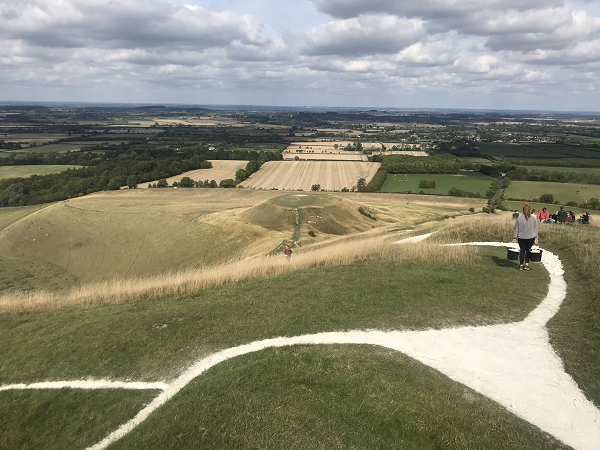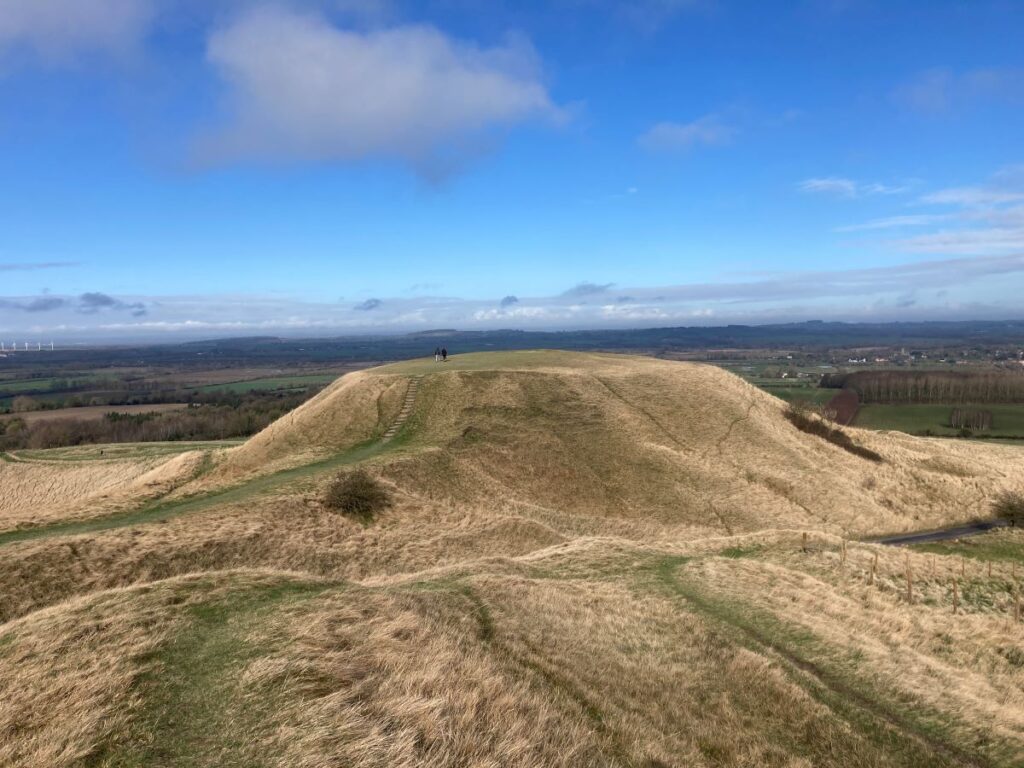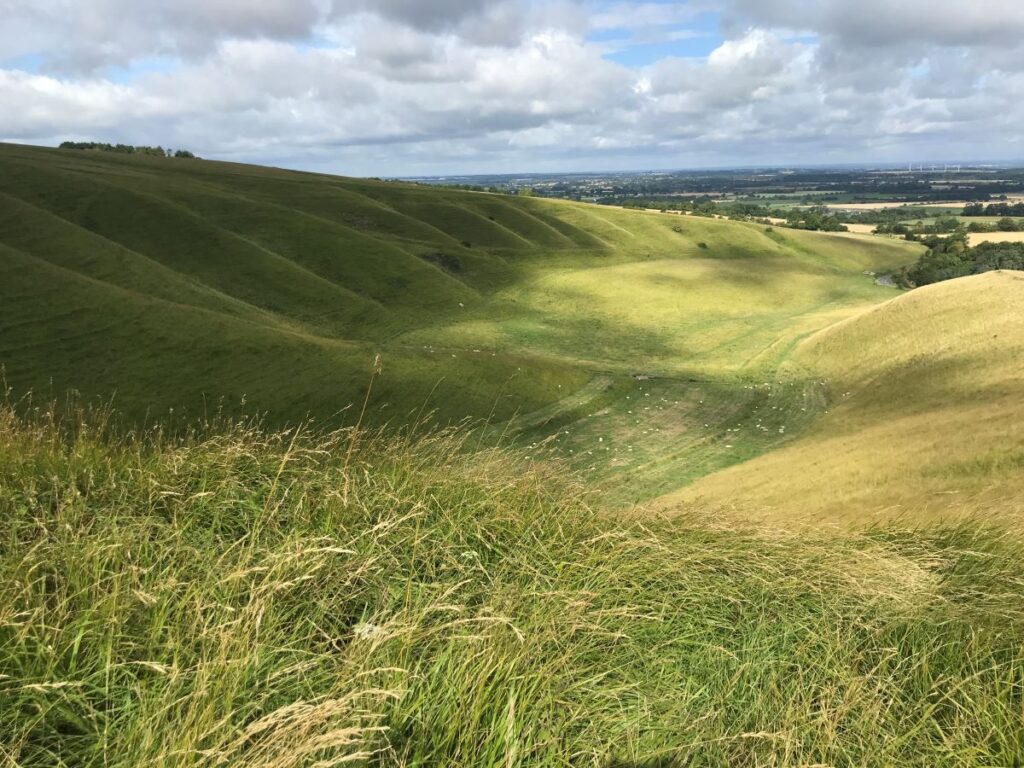There are no less than 16 white horses carved into the chalk hillsides of Britain. Some are older than others. And whilst the White Horse of Kilburn is perhaps the most attractive, the Uffington White Horse is the oldest, dating back to the bronze age, some 3,000 years ago.
To create the effect requires more than simply weeding the top soil to expose the chalk. Instead, trenches are dug and filled with chalk. If not maintained, grass will soon cover the chalk and the horse will disappear. Hence the annual scouring events that used to take place – written about by Thomas Hughes, author of Tom Brown’s Schooldays, in his book The Scouring of the White Horse. Scouring still takes place but nowadays this is done by the National Trust who manages the site.

But why a carving? And why a horse? No one really knows. One theory is that the horse was intended as a focal point – so that wandering people could see where a settlement was. But that theory doesn’t work well as the horse is just on the top of a hill and so out of view from many angles. Had it been further down the slope it would have been more visible and the theory more plausible. The fact that it is almost impossible to photograph the horse from the land almost proves the point.
Another theory is that there is some connection between the sun and the horse. The positioning of the Uffington White Horse means that the sun rides past the horse on its journey from east to west.
The horse itself is a “stick” horse and quite minimalistic in design. Some say it’s not a horse at all but a sabre-toothed cat or even a dragon.
Below the White Horse is Dragon Hill, a flat topped hill with a prominent bald patch. It is said that Saint George slew the dragon here and that the blood which spewed out is why no grass grows. Romantic as the tale is, it is complete nonsense. After all, St George grew up in Cappoddocia, Turkey. But we can be quite sure that the flat top is man-made. So clearly it must have had some ritualistic purpose.

Below both the White Horse and Dragon’s Hill is a beautiful dry valley known as The Manger where, it is said, the White Horse comes at night to feed. A river would have once run down this lovely valley. But chalk, being chalk, has allowed the stream to run underground and reappear on the “spring line” – which is why all the villages that you have to walk to for your accommodation are all about the same distance from the Ridgeway.

The Uffington White Horse can be visited whilst walking The Ridgeway National Trail.